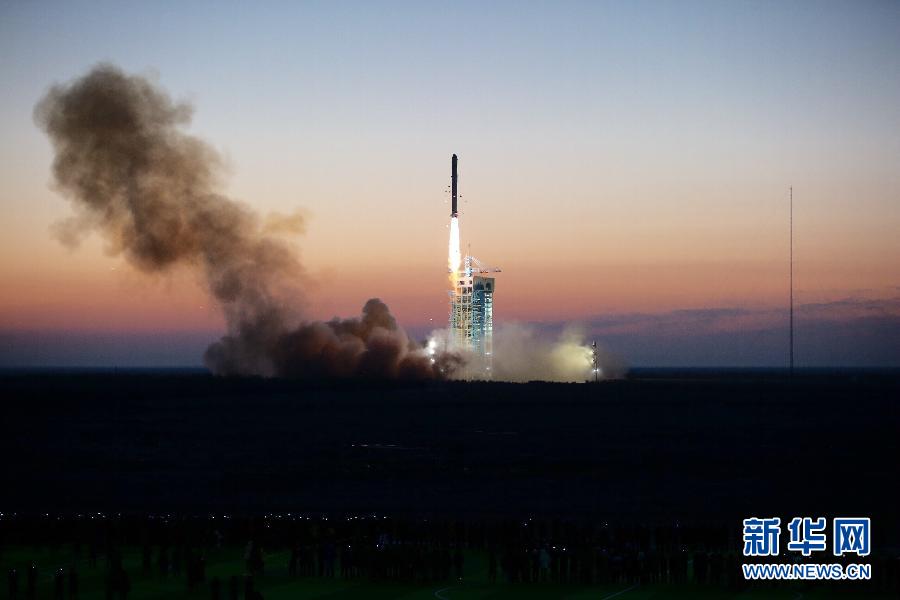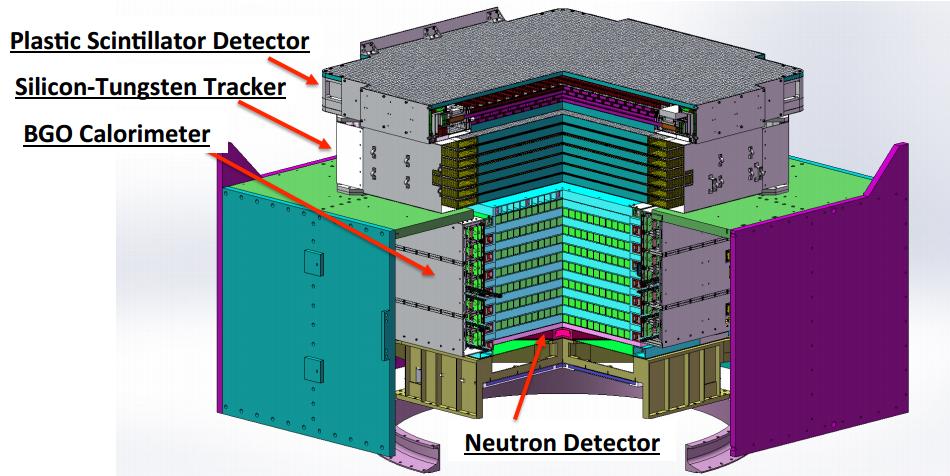DAMPE (DArk Matter Particle Explore) is one of the five satellite missions in the framework of the Strategic Pioneer Research Program in Space Science of the Chinese Academy of Sciences (CAS). DAMPE has been launched the 17 December 2015 at 08:12 Beijing time into a sun-synchronous orbit at the altitude of 500 km.
| Home |
| PSD |
| STK |
| BGO |
| NUD |
| News |
| Publication | The DAMPE Collaboration |



DAMPE is a powerful space telescope for high energy gamma-ray, electron and cosmic rays detection. It consists of a double layer of plastic scintillator strips detector (PSD) that serves as anti-coincidence detector, followed by silicon-tungsten tracker-converter (STK), which is made of 6 tracking double layers; each consists of two layers of single-sided silicon strip detectors measuring the two orthogonal views perpendicular to the pointing direction of the apparatus. Three layers of Tungsten plates with thickness of 1mm are inserted in front of tracking layer 2, 3 and 4 for photon conversion. The STK is followed by an imaging calorimeter of about 31 radiation lengths thickness, made up of 14 layers of Bismuth Germanium Oxide (BGO) bars in a hodoscopic arrangement. A layer of neutron detectors is added to the bottom of the calorimeter. The total thickness of the Bismuth Germanium Oxide calorimeter (BGO) and the STK correspond to about 33 radiation lengths, making it the deepest calorimeter ever used in space. Finally, in order to detect delayed neutron resulting from hadron shower and to improve the electron/proton separation power a neutron detector (NUD) is placed just below the calorimeter. The NUD consists of 16, 1 cm thick, boron-doped plastic scintillator plates of 19.5 × 19.5 cm2 large, each read out by a photomultiplier.

The main scientific objective of DAMPE is to measure electrons and photons with much higher energy
resolution and energy reach than achievable with existing space experiments in order to identify
possible Dark Matter signatures. It has also great potential in advancing the understanding of the
origin and propagation mechanism of high energy cosmic rays, as well as in new discoveries in high
energy gamma astronomy.
DAMPE will have unprecedented sensitivity and energy reach for electrons, photons and cosmic rays
(proton and heavy ions). For electrons and photons, the detection range is 5 GeV – 10 TeV, with an
energy resolution of about 1.5% at 100 GeV. For cosmic rays, the detection range is 100 GeV – 100 TeV,
with an energy resolution better than 40% at 800 GeV. The geometrical factor is about 0.3 m 2 sr for
electrons and photons, and about 0.2 m2 sr for cosmic rays. The angular resolution is 0.1° at 100 GeV.
The DAMPE payload is shown in the following image while it was under vibration tests. The qualification tests have been successfully passed and the quality of each detectors remains excellent. The total weight of the payload is of 1400 kg and its power consumption is of 400 W. The total weight of the satellite is of 1900 kg. The DAMPE satellite has been launched the 17 December 2015 at 08:12 Beinjing Time.